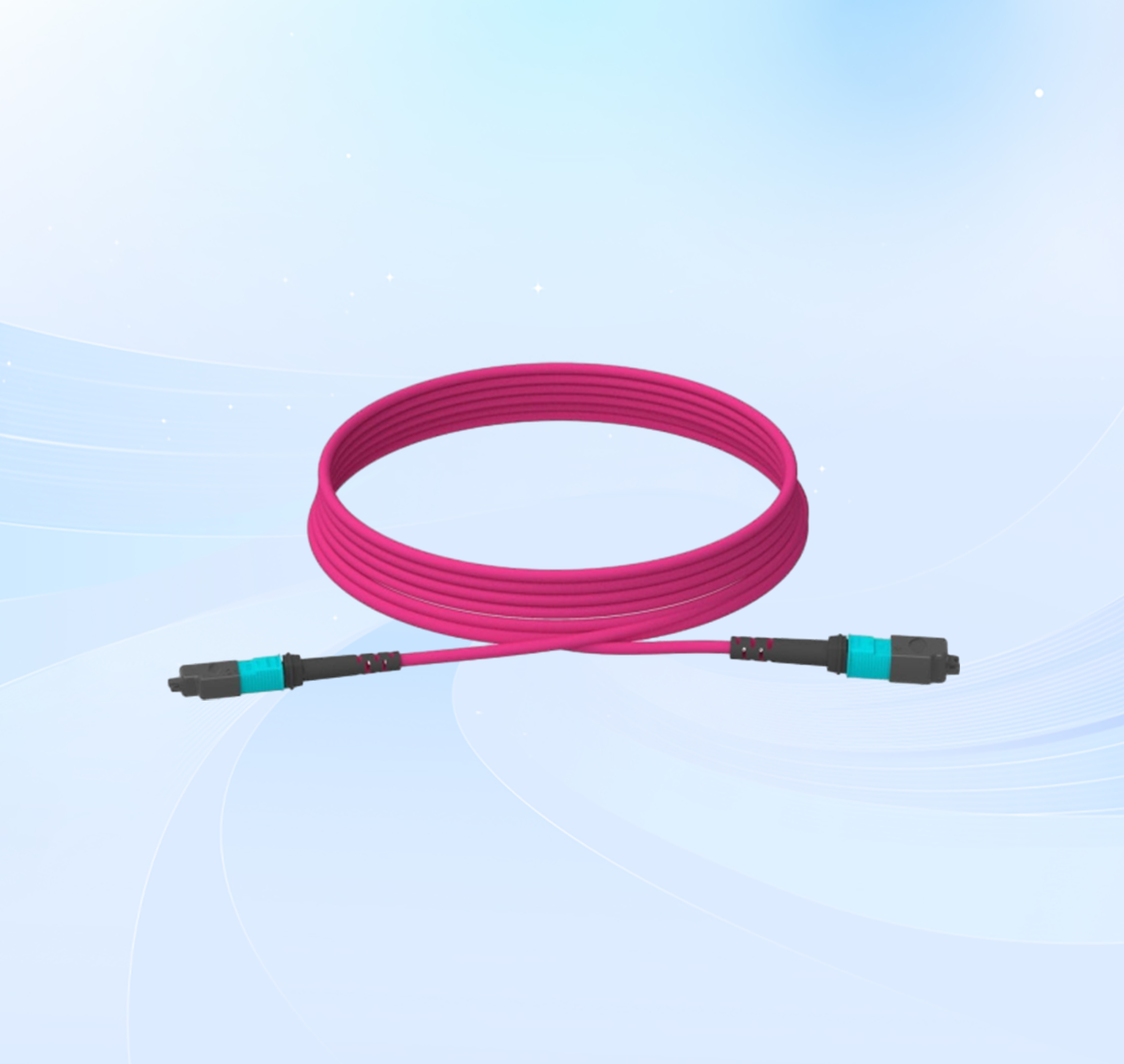In the accelerating growth landscape of technology, the demand for faster and more reliable networks is escalating, particularly with the integration of Artificial Intelligence (AI) in various industries. One key player in meeting these demands is OM5 fiber, a high-performance fiber-optic connectivity solution that promises to power the era of AI with its enhanced capabilities. This article discusses OM5 fiber in AI applications.

What is OM5 Fiber?
OM5, also known as wideband multi-mode fiber (WBMMF), is a multi-mode fiber optic cable used in high-speed data centers and other high-performance computing environments. It supports at least four low-cost wavelengths in the 850-950 nm range, enabling SWDM (Short Wavelength Division Multiplexing ) applications that reduce parallel fiber count by at least a factor of four to allow continued use of two just fibers (rather than eight) for transmitting 40/100G and reduced fiber counts for higher speeds. OM5 fiber has a clear EMB (Effective Modal Bandwidth), low attenuation, and compatibility with OM3 and OM4 fiber.

What is AI?
AI is a technology that enables computers and machines to simulate human intelligence and problem-solving capabilities. It can perform tasks that would otherwise require human intelligence or intervention. Digital assistants, GPS guidance, autonomous vehicles, and generative AI tools (like Open AI and Chat GPT) are just a few examples of AI in daily life. AI encompasses machine learning (ML) and deep learning (DL).

What are the Benefits of OM5 Fiber in AI?
1) High Bandwidth: OM5 fiber offers unparalleled higher bandwidth compared to previous generations. This increased capacity is essential for handling the massive amounts of data generated and processed by AI algorithms, facilitating seamless communication within AI-driven systems.
2) Low Latency: In AI applications, particularly real-time processing scenarios, low latency is crucial. OM5 fiber can transmit data at high speeds with low latency, making it an ideal option for environments where split-second decision-making is essential.
3) Wavelength Division Multiplexing (WDM): OM5 fiber supports WDM that allows multiple signals to be transmitted simultaneously over different wavelengths. WDM in optical fiber enables the efficient use of available bandwidth, a crucial factor in supporting the data-intensive requirements of AI applications.
4) Long Transmission Distance: OM5 fibers support longer transmission distances, a crucial factor in the expansive layouts of high-performance computing (HPC) clusters and data centers.
5) Future-Proofing: OM5 fiber provides a future-proof solution by offering the scalability needed to accommodate evolving AI applications and the increasing volume of data they generate.
OM5 Fiber Application Scenarios in AI
(1) Data Centers
Data centers are the core hub for AI, and OM5 fibers are used to connect various components within the data center, including servers, storage, etc. Its high bandwidth, density, and low latency guarantee efficient communication between components within the data center.
(2) High-Performance Computing
AI usually requires massive computing resources, and high-performance computing (HPC) provides a platform for handling large-scale computing tasks. OM5 fibers are used to connect nodes in the cluster to realize fast and reliable data transmission to support HPC needs.
(3) Edge Computing
With the rise of edge computing in AI, where processing occurs closer to the data source, OM5 fiber plays a pivotal role. Its low-latency features, make it an ideal choice for ensuring real-time communication between edge devices and centralized AI systems.
(4) Deep Learning Training
During deep learning training, a large amount of data needs to be transferred between servers and gas pedals, and the high bandwidth features of OM5 fiber can support the training of large-scale neural networks and accelerate the model convergence process.
(5) Cloud Services
Cloud services are the foundation of many AI applications, where users compute and store through cloud services. OM5 fibers can connect servers and data centers of cloud service providers, providing users with high-performance, high-bandwidth cloud services support.

Conclusion
In conclusion, OM5 fibers in AI applications are transformative. It uses SWDM technology to transmit multiple signals on one fiber, increasing the bandwidth of a single fiber by at least four. In addition, its high bandwidth and long distances make it a key player in powering the era of AI and shaping the future of data communications.
Sun Telecom provides total and customized solutions of fiber optic products to the global market. Contact us if you have any needs.


 Position :
Home>
News & Tutorial
>Products
Position :
Home>
News & Tutorial
>Products




 Position :
Home
>Products
Position :
Home
>Products





 ics@suntelecom.cn
ics@suntelecom.cn  +86 18964888554
+86 18964888554 Building No.145, Lane 666 Xianing Road, Jinshan Industrial Zone, Shanghai 201506, China
Building No.145, Lane 666 Xianing Road, Jinshan Industrial Zone, Shanghai 201506, China